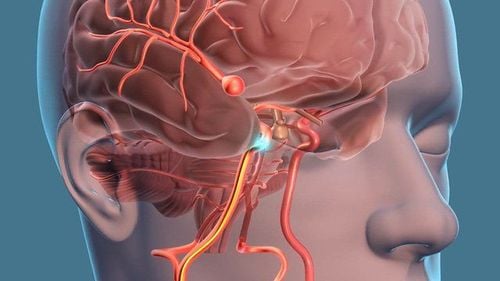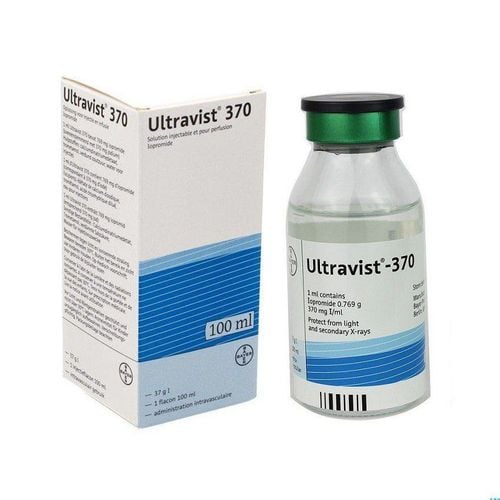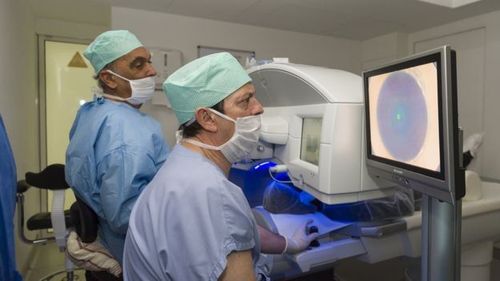This is an automatically translated article.
The article is professionally consulted by Master, Doctor Nguyen Quang Duc - Doctor of Nuclear Medicine - Department of Diagnostic Imaging and Nuclear Medicine - Vinmec Times City International General Hospital.Natural or man-made radioactive decay produces radioactive isotopes. The application of radioisotopes in medicine has become popular, serving diagnostic and therapeutic purposes.
1. What is a radioactive isotope?
An element has many different isotopes, radioactive isotopes are called radioisotopes, they have the same number of protons but different number of neutrons. Radioisotopes are also known to be atoms that contain protons and neutrons but are unstable.Radioisotopes are products of radioactive decay to bring the nucleus to equilibrium by emitting energy in the form of radiation. This process can occur naturally or artificially.
2. Application of radioisotopes in medicine
Radioisotopes have been discovered and applied since 1930. Up to now, the main application of radioisotopes in medicine is for diagnosis and treatment. For radioisotopes with short half-lives, rapid decay, will be used for diagnosis. With isotopes with long half-life, long decay, will be used for treatment.The principle of application of radioisotopes in medicine is the same as that of normal isotopes, that is, when participating in physiological processes of the body such as metabolism, distribution or elimination, radioactive isotopes do not cause any harm. pharmacological effects.
Radioisotopes are introduced into the body as radiopharmaceuticals by binding to carriers (tracers), which can be injected orally. Depending on the purpose of examination and the diagnostic agency, different radiopharmaceuticals will be used.
2.1 Radioisotope applications in diagnosis Radioisotope applications in diagnostic imaging is a technique that uses a scanner to record and reproduce images of the distribution of radioisotopes in internal organs. body by measuring radioactivity.
Some commonly used scanners are Gamma cameras. Currently, SPECT (Single Photon Emission Computed Tomography, single photon emission tomography) is a modern scanner that receives gamma rays, can rotate 360 degrees and record tomography.
In addition to SPECT, radioisotopes are also used for PET (Positron Emission Tomography, positron emission tomography) machine for imaging. However, to make an accurate diagnosis, it is necessary to combine the SPECT or PET machine with CT to obtain both functional and anatomical images.
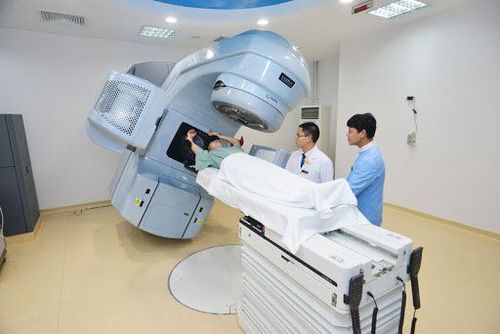
Thyroid scan: Thyroid scan to determine the position, shape and size of the thyroid gland; evaluate the function of the thyroid nodule; pre- and post-operative evaluation for thyroid cancer; differential diagnosis with tumors of the neck and mediastinum. Myocardial perfusion scan: When radioactive drugs enter the body through the bloodstream, they will stay there and emit gamma radiation. The scanner will obtain images of radioisotope distribution in the myocardium, areas that are not perfused or poorly perfused are areas of radioactivity. Myocardial perfusion scintigraphy is performed at rest and during exercise to accurately assess myocardial perfusion, activity and viability in each region. Kidney scan: A kidney scan uses radiopharmaceuticals that emit gamma rays. The kidney is an organ that rapidly absorbs gamma-ray radioisotopes. When they enter the body, they stay there and emit radiation that is picked up by the scanner by measuring the distribution of radioactivity. They are then filtered, secreted, and excreted. Brain scan: When the blood-brain barrier is damaged (due to trauma or diseases such as brain cancer, cerebral ischemia, brain abscess, ...) will create conditions for substances in the blood, including have radioisotopes attached for diagnostic purposes, entering the damaged brain area. Scanning techniques will obtain images of radiopharmaceuticals concentrated in the blood-brain barrier when damaged, an area with higher radioactivity than surrounding tissues. Or they will be distributed in the brain organization, then, the damaged area is the missing or reduced radiation areas. Bone scintigraphy: The application of radioisotopes in bone scintigraphy to diagnose and detect fractures and bone cancer, especially of high value in searching for bone metastases. Injured areas will appear to increase metabolism, increase blood flow, increase cell production, so when radioactive substances penetrate there, the area will have higher radioactivity. 2.2 Application of radioisotopes in treatment Compared with diagnosis, radioisotopes used for therapeutic purposes (internal radiation therapy) must use larger doses, thus increasing the possibility of affecting tissues. heal more. That is also the disadvantage of radiotherapy. However, this is still a highly effective and safe treatment method.
Radiation therapy includes the following modes:
Metabolic radiotherapy : Metabolic radiotherapy uses radioactive isotopes in the form of radiopharmaceuticals. Radiopharmaceuticals are delivered to the organ to be examined and treated by oral or injection. Metabolic radiotherapy only uses radioactive isotopes emitting beta rays, this beam affects mainly the target tissues and has very little effect on the healthy tissues of the surrounding tissues. Organs that can absorb beta-emitting radioisotopes can use that radioisotope in therapy. Brachytherapy: Brachytherapy, also known as Curie therapy, approach radiotherapy, internal radiation therapy. This method brings the radiation source close to the lesion area to increase the absorption of irradiation for the tumor area and reduce the irradiation of the surrounding healthy tissue. External beam radiation therapy: External beam radiation therapy, also known as remote radiation therapy or Cobalt therapy, is a method of using an irradiator.
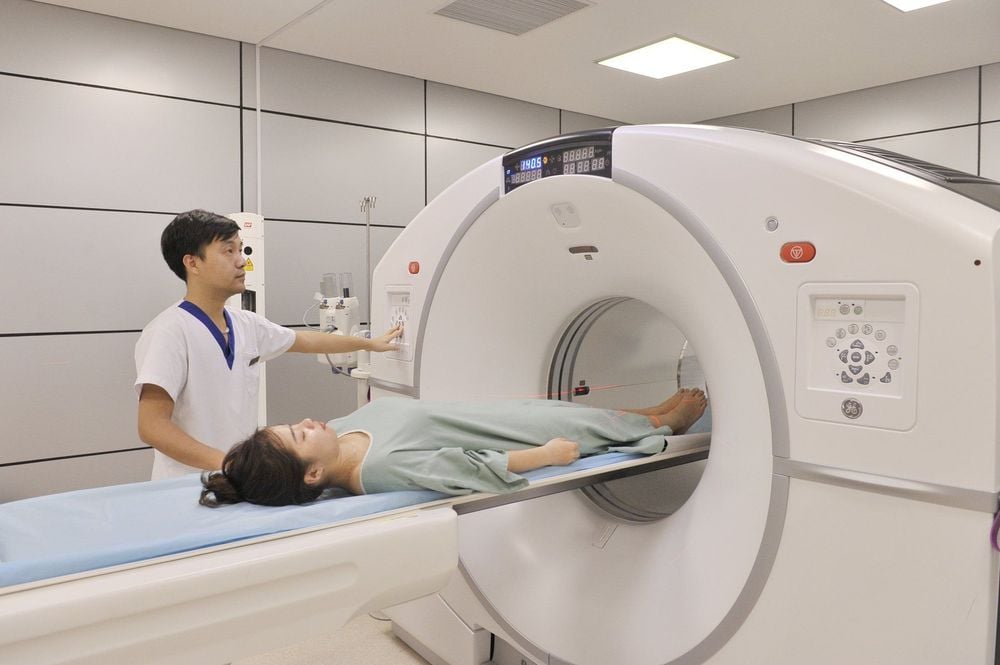
Thyroid pathology: Radioisotopes of iodine are mainly concentrated in the thyroid gland, so it is used in the treatment of certain diseases. some thyroid diseases such as surgically differentiated thyroid cancer, Basedow. Primary polycythemia vera, chronic leukaemia, hemangioma: Radioisotopes of phosphorus have the ability to penetrate into the nucleus of diseased cells and inhibit cell division. Based on the higher radiosensitivity of diseased blood cells than normal blood cells, radioisotopes of phosphorus are used to treat blood cell diseases such as primary polycythemia, leukopenia, and polycythemia. chronic, flat hemangioma in children. Treatment of pain caused by bone metastases: External or internal radiation therapy is now used to replace opiate-containing analgesics, and is an effective treatment for metastatic bone cancer. Radioisotopes of calcium and phosphorus increase sharply when introduced and penetrated into bone tissues, because when bone tissue is destroyed, metabolic, circulatory and mitotic processes increase. Primary liver cancer: Beta radiation emitted from radiopharmaceuticals that are injected through a catheter into the hepatic artery, reach the tumor and remain there without escaping will help destroy liver cancer cells. . Peritoneal metastatic cancer: Using radiolabelled antibodies to treat some metastatic peritoneal cancers such as ovarian cancer. Radiopharmaceuticals can be administered intravenously or peritoneally. Cancer causing pleural effusion: Radioisotopes that emit beta rays have the ability to destroy tumor cells present in the pleural fluid. However, injecting radiation into the pleura can lead to complications such as fever and mild shortness of breath. Cardiovascular disease: Coronary artery patients after angioplasty and stenting may experience coronary artery re-stenosis, due to the proliferation of endothelial tissues in the lumen. Some radioisotopes have the ability to inhibit this process and help maintain a clear artery. Some joint diseases: Radioisotopes are attached to the carriers and injected directly into the joint socket, helping to destroy the synovial membrane, which is an effective treatment for some current joint diseases such as chronic non-specific arthritis. infections, rheumatoid arthritis, proliferative bursitis, persistent synovial effusion, hemophilic joint disease. Radioimmunotherapy: Using specific antibodies labeled with radioisotopes capable of emitting beta rays to penetrate the tumor and cause tumor cell necrosis. The greater the amount of antibodies that are concentrated in the tumor and the longer it lasts, the more effective the treatment will be. This method is effective for tumors with small size <2cm and good perfusion, indicated for cases of lymphoma, ovarian cancer, neuroblastoma. Today, radioisotopes are widely used in the diagnosis, detection and treatment of many diseases, especially cancers.
Currently, Vinmec International General Hospital has become a leading prestigious address in disease screening with modern techniques, proud to be the first private hospital in Vietnam to deploy this technique. Modern and accurate diagnosis with the most modern 128-sequence PET/CT system in Southeast Asia, for accurate images and short imaging time, the team of doctors are leading experts with high expertise and rich experience. Experience creates trust for customers when experiencing medical examination and treatment services at Vinmec.
If you have a need for consultation and examination at Vinmec Hospitals under the nationwide health system, please book an appointment on the website for service.
Please dial HOTLINE for more information or register for an appointment HERE. Download MyVinmec app to make appointments faster and to manage your bookings easily.





